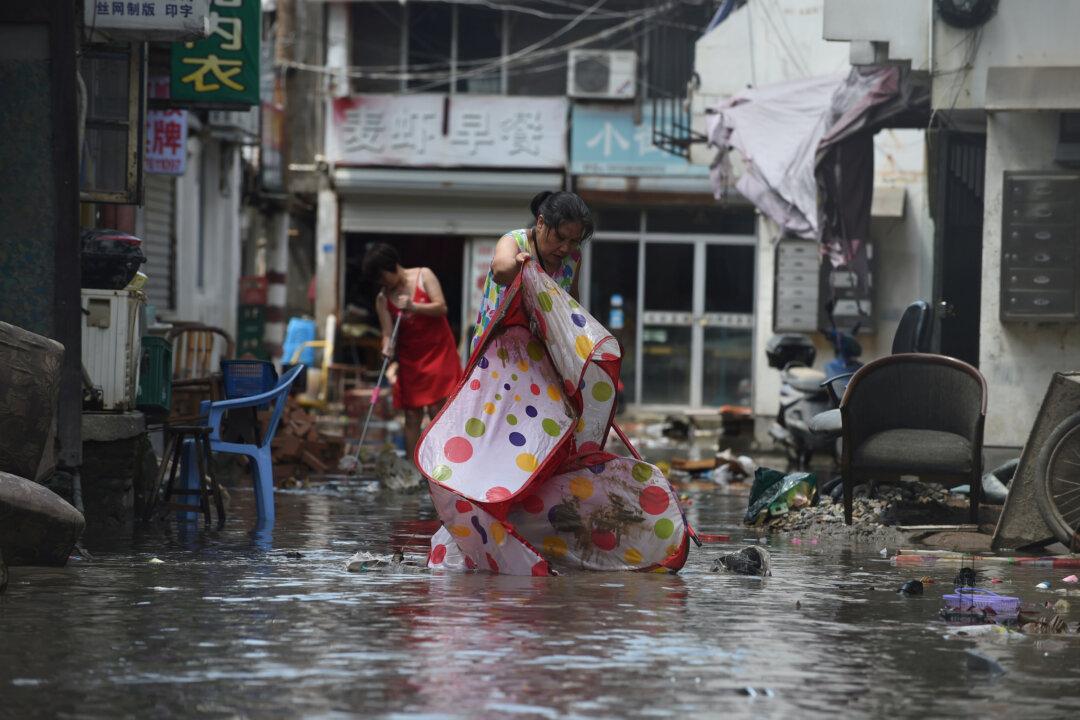The Umbrella Movement didn’t just politically awaken Hongkongers; it also brought out their artistic side.
During the nearly three-month long street demonstrations, Hongkongers journeyed to three main protest sites—Admiralty, Mong Kok, Causeway Bay—to craft sculptures, make ornaments, fold origami, and draw cartoons.
Symbolic of the Hong Kong people’s wishes and aspirations for true democracy, these creative works have been recognized as precious cultural treasures in the history of civil disobedience.
Before the authorities evicted protesters in December last year, the Umbrella Movement Visual Archives & Research Collective—dubbed the “Monuments Men“ of the Occupy protests—managed to rescue some of the more prominent pieces from the scrap heap.
But what if one wishes to view works in situ?
Recently, a photo book, “Power of Unspoken Words - The Protest Art of Hong Kong Umbrella Movement”—大音希聲: 香港雨傘運動中的反抗之物 in Chinese—was published in Hong Kong.
Zatoichi, the book’s author, took thousands of photos during the pro-democracy movement, and carefully curates dozens in “Power of Unspoken Words.”
In a Q&A with Epoch Times, Zatoichi explains his book and comments on the watershed democracy event.
Epoch Times (ET): What aspects of the Umbrella Movement inspired you to embark on this project?
Zatoichi: Five things in the Umbrella Movement deeply touched me:
First, the protesters simply used umbrellas to ward off the police’s attacks with tear gas and pepper spray.
Second, protesters responded to violent anti-Occupy groups who assaulted them with peaceful, rational, and non-violent means, such as circling the anti-Occupy groups while singing the Happy Birthday song.
Third, in the occupied areas, protesters and artists used posters, comics, costumes, photos, billboards, oil paintings, and other artistic forms to express their wishes and aspirations for true democracy.
Fourth, the protesters would deposit various items donated by the public, such as bath gel, shampoo, hair conditioner, skin care products, etc., in the restrooms in occupied areas. They also left behind slips bearing messages like “protesters also need to dress up” to encourage others. And the wash basins in restrooms were always kept very tidy and neat.
Finally, in the areas occupied by tens of thousands of protesters, there was no garbage to be found; the garbage had all been carefully sorted out and cleared away.
ET: What is your impression of the Umbrella Movement?
Zatoichi: This umbrella revolution might be the biggest civil disobedience movement in Hong Kong since it first opened up to international trade on Jan. 26, 1841. It was also the largest civil disobedience campaign to push the Chinese communist regime for true democracy.
The Umbrella Movement was a significant event taking place in my life. As an individual, I must do something, I thought. If I simply sat on the sidelines and didn’t to do anything about it, I wouldn’t had been able to sleep soundly at night.
What I could do then was use my camera to capture the scenes that touched me so much.
In this movement, protesters won the world’s respect by practicing absolute peace, absolute courtesy and absolute dignity. And this behavior is what the Chinese regime is afraid of.
The Chinese regime fears that the protesters’ roars might rouse China’s population of over a billion to struggle for the true democracy they are entitled to, and clamor for the Chinese Communist Party to step down.
The Chinese regime condemned the protesters as “road bullies” and “thugs” manipulated by “foreign forces” to overthrow the Party. But the Chinese regime has openly or covertly mobilized all of its resources, including military, police, and special agents, to intimidate and frame protesters in a bid to sow discord amongst them.
ET: And what are your thoughts about the Umbrella Movement post-Occupy Central?
Zatoichi: Some people think the movement has failed after the 79-day long street protests, but I believe they draw this conclusion too hastily.
This movement has a far-reaching impact, and the true winners are the protesters, not the Hong Kong government or the Chinese regime. This is because Hong Kong residents now feel ever more distant from China. They’re starting to identify themselves more as “Hongkongers” instead of citizens of communist China.
Also, Hong Kong people’s determination and courage to strive for true democracy has been awakened by the Umbrella Movement.
The whole world now sees clearly that the so-called “one country, two system” policy is a downright lie; the Party has completely lost the hearts of the current generation of Hong Kong people.
ET: Do you recall any particularly poignant moments or events from the Umbrella Movement?
Zatoichi: When I took these photos, many details brought me to tears. From the countless small items hand-made by the protesters, I could deeply feel their aspiration and yearning for genuine democracy.
I included some of these items in my book.
ET: You’ve got many brilliant photos in “Power of Unspoken Words.” Which would you say is your favorite?
Zatoichi: The dozens of photos are selected from thousands of photographs I took of different scenes. It took me more than a month to sieve through them; all those that I’ve selected for the book are my favorite.
Actually, I only sought to truthfully record the work of those protesters and artists.
Through these photos, I hope that those who have not witnessed this movement will be able to feel the protesters’ heartfelt wishes and their unstoppable determination and courage.
These photos were once posted in the occupied area and attracted many passerby’s attention. Although they join the Umbrella Movement as a soundless protest, any discerning individual can hear the furious, deafening bellow from these silent photos.
“Power of Unspoken Words - The Protest Art of Hong Kong Umbrella Movement” (大音希聲: 香港雨傘運動中的反抗之物) is published by 1908 Book Store and is currently only available in Hong Kong. Zatoichi can be contacted at [email protected].

